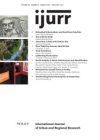Housing has come to play an important role in demarcating the contours of social polarization in inner London, notably via the widening socio‐spatial divide between an impoverished working class located in council housing estates and affluent home‐owning gentrifiers. In mass media and policy discourses, the former are routinely represented as an unruly urban ‘underclass’, a representation that homogenizes council tenants and marginalizes their voices. This article aims to move beyond a narrow underclass perspective by providing an in‐depth analysis of neighbourhood place images and social identity based on interviews with white working‐class council tenants in the inner London Borough of Camden. Drawing on debates around social distinction and place, the article illustrates a complex set of neighbourhood images rooted in narratives of urban decline as well as notions of belonging and knowing people. The article examines these place images in relation to the longstanding status distinction between respectability and roughness, as well as ‘race’. In conclusion, the defensive and exclusionary elements of neighbourhood images are related to processes of social deprivation and insecurity that have affected working‐class council tenants in Camden.
Details
Written by:
PAUL WATT
Digital Object Identifier (DOI)
10.1111/j.1468-2427.2006.00688.x
About DOI
Read full article as PDF
Read full article as HTML
See the references for this article
